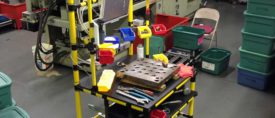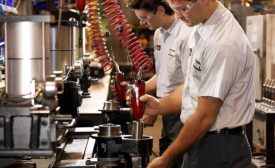Home » assembly line design
Articles Tagged with ''assembly line design''
What’s New With Conveyors
Conveyors remain essential for getting parts to the right spot at the right time. Here’s a look at the state of the art.
July 8, 2021
Mobile Workstations for Flexible Assembly
Wheeled workbenches can work wonders on flexible assembly lines.
May 17, 2021
Lean Gives Crown Equipment a Lift
Continuous improvement and a vertical manufacturing strategy enable Crown to compete in a crowded market.
January 4, 2021
How Lean Helped GE’s Turbine Factory Find Its Mojo
Lean has enabled GE’s turbine assembly plant in Greenville, SC, to save money, improve quality, and reduce manufacturing time
December 3, 2020
Never miss the latest news and trends driving the manufacturing industry
Stay in the know on the latest assembly trends.
JOIN TODAY!Copyright ©2024. All Rights Reserved BNP Media.
Design, CMS, Hosting & Web Development :: ePublishing












